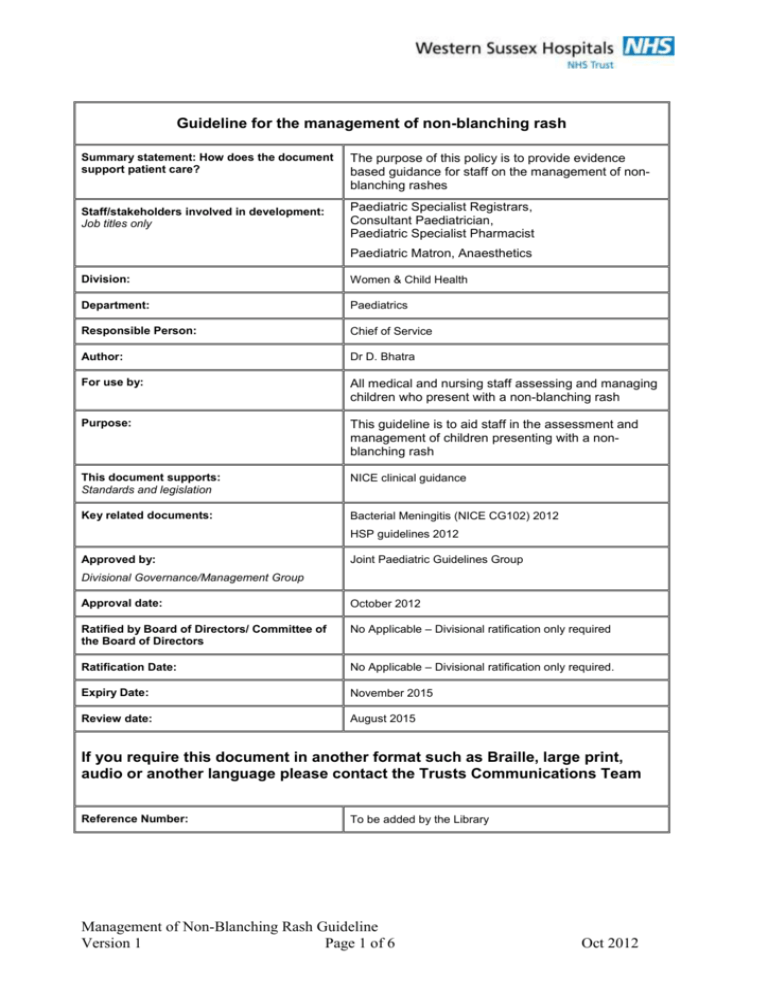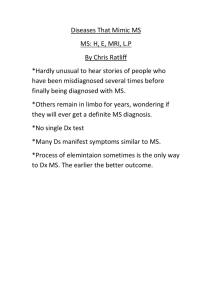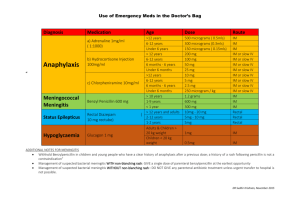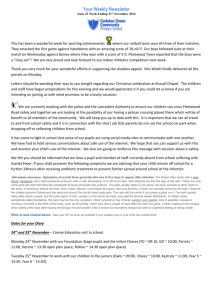Guideline Management of non blanching rash
advertisement

Guideline for the management of non-blanching rash Summary statement: How does the document support patient care? Staff/stakeholders involved in development: Job titles only The purpose of this policy is to provide evidence based guidance for staff on the management of nonblanching rashes Paediatric Specialist Registrars, Consultant Paediatrician, Paediatric Specialist Pharmacist Paediatric Matron, Anaesthetics Division: Women & Child Health Department: Paediatrics Responsible Person: Chief of Service Author: Dr D. Bhatra For use by: All medical and nursing staff assessing and managing children who present with a non-blanching rash Purpose: This guideline is to aid staff in the assessment and management of children presenting with a nonblanching rash This document supports: Standards and legislation NICE clinical guidance Key related documents: Bacterial Meningitis (NICE CG102) 2012 HSP guidelines 2012 Approved by: Joint Paediatric Guidelines Group Divisional Governance/Management Group Approval date: October 2012 Ratified by Board of Directors/ Committee of the Board of Directors No Applicable – Divisional ratification only required Ratification Date: No Applicable – Divisional ratification only required. Expiry Date: November 2015 Review date: August 2015 If you require this document in another format such as Braille, large print, audio or another language please contact the Trusts Communications Team Reference Number: To be added by the Library Management of Non-Blanching Rash Guideline Version 1 Page 1 of 6 Oct 2012 Version date Author Status 1.0 Oct 2012 Dr D Bhatra Live Comment 2.0 3.0 4.0 Management of Non-Blanching Rash Guideline Version 1 Page 2 of 6 Oct 2012 INDEX 1.0 2.0 3.0 Purpose Differential Diagnosis Algorithm References Management of Non-Blanching Rash Guideline Version 1 Page 3 of 6 Page No. 4 4 5 Oct 2012 1.0 Purpose: To guide medical and nursing staff in assessment and management of children presenting with nonblanching rash Children commonly present with a non-blanching rash. The minority with invasive meningococcal disease and other invasive bacterial infections (about 10%) need to be distinguished from the majority with benign self-limiting illnesses. Recent studies 1-5 have allowed us to derive an evidenced-linked guideline for the management of these children. 2.0 Differential Diagnosis. The differential diagnosis of a non-blanching rash includes: Meningococcal disease (MCD) Sepsis with other bacteria (uncommon) Viral illnesses Trauma/Mechanical/NAI Thrombocytopenia of various causes The following groups are distinct and usually not difficult to diagnose: Idiopathic thrombocytopenia (ITP) Henoch Schonlein purpura (HSP) Acute leukaemia Haemolytic uraemic syndrome (HUS) They have other specific signs or symptoms: ITP: Usually well children with multiple bruises and petechiae noted over several days HSP: Usually a classical distribution of purpura, bruising and urticaria on the buttocks and extensor surfaces of the limbs, sometimes associated with joint or abdominal pain Acute leukaemias: Symptoms of slower onset associated with anaemia, lymphadenopathy or hepatosplenomegaly HUS: Oliguria/ anuria associated with anaemia, usually following a diarrhoeal illness This leaves a further group of children in whom we need to distinguish MCD and other bacterial sepsis, from self- limiting viral illness or trauma. The following algorithm is based on observation and investigation of these children and provides a simple guide to their assessment and management. Prior administration of penicillin does not alter the algorithm but these children should have a senior review prior to discharge in order to reassure parents. Management of Non-Blanching Rash Guideline Version 1 Page 4 of 6 Oct 2012 3.0 ALGORITHM FOR PETECHIAL RASH Non Blanching Rash Purpura (lesions>2mm) Treat as MCD (Follow meningococcal guideline) ILL criteria (Irritable, Lethargic, toxic, Low BP and/or Capillary refill >2sec No Petechiae confined to SVC distribution (above nipple line) No Yes Vomiting or persistent cough which can explain petechiae in SVC distribution Yes Admit & Observe Do FBC, CRP, Blood Culture, Meningococcal PCR No If clinically well, no spread of rash, normal bloods then discharge, otherwise treat as MCD Management of Non-Blanching Rash Guideline Version 1 Page 5 of 6 If bloods normal and clinically well during 6hr observation then discharge otherwise treat as MCD Oct 2012 References 1. Mandl KD, Stack AM, Fleisher GR. Incidence of bacteraemia in infants and children with fever and petechiae Journal of Pediatrics 1997;131:398-404 2. Brogan P, Raffles A. The management of fever and petechiae: making sense of rash decisions. Arch Dis Child 2000;83:506-507. 3. Marzouk O, Bestwick K, Thomson AP, Sills JA, Hart CA. Variation in serum C-reactive protein across the clinical spectrum of meningococcal disease. Acta Paediatr 1993 82:729-33. 4. Nielson HE et al. Diagnostic assessment of haemorrhagic rash and fever. Arch Dis Child 2001 85:160-165. 5. Wells LC, Smith JC, Weston V, Collier J, Rutter N. The child with a non-blanching rash: How likely is meningococcal disease? Arch Dis Child 2001 85:218-222. Management of Non-Blanching Rash Guideline Version 1 Page 6 of 6 Oct 2012




